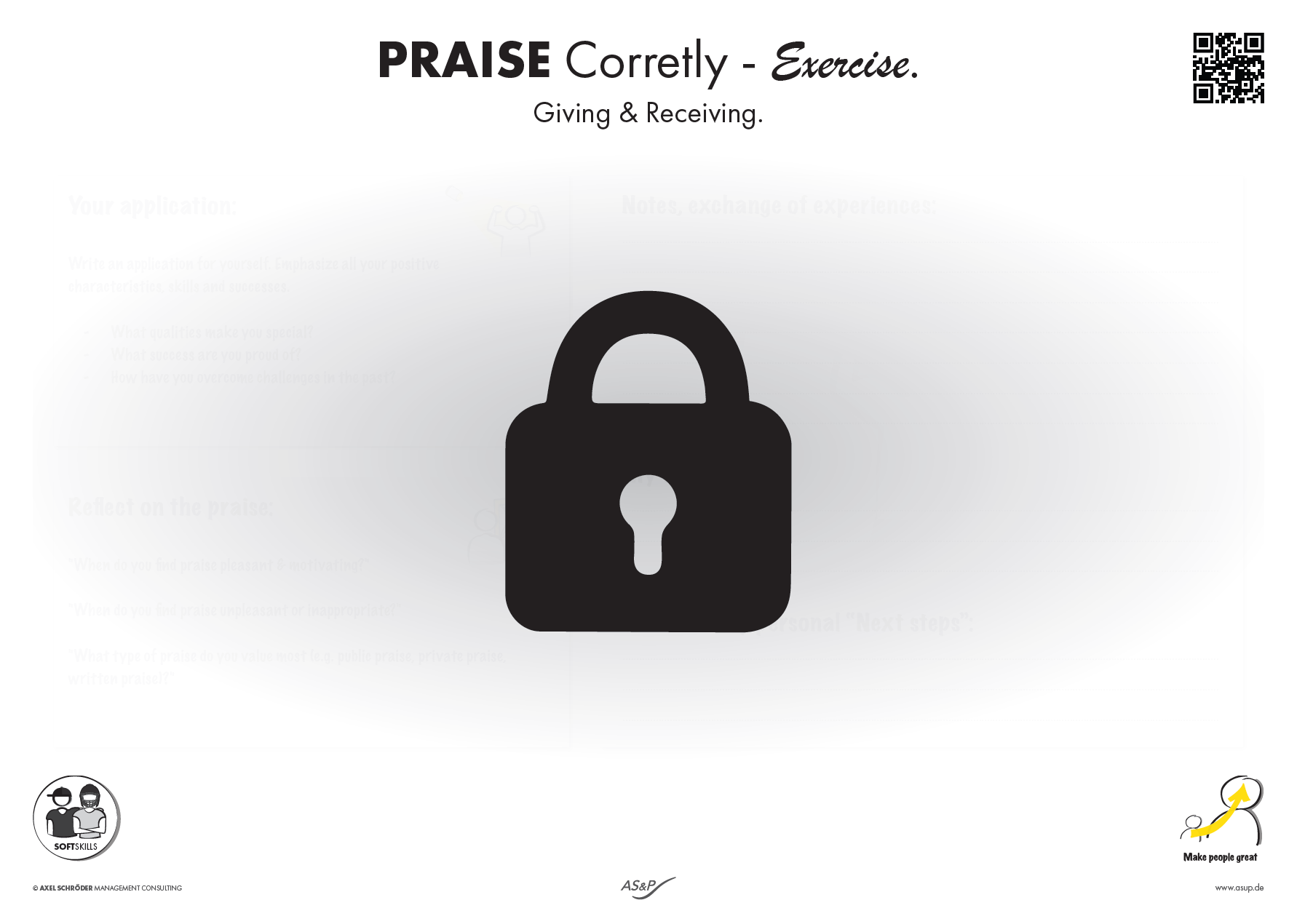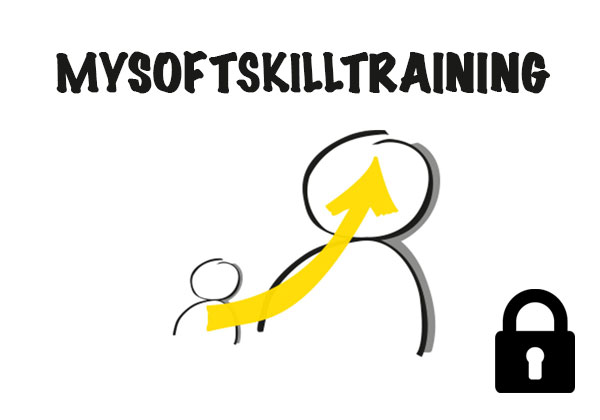PRAISE Correctly.
1. Unintentional.
“That was good, but…” What are the 2 mistakes in this sentence?
1. “That was good” is a judgment – a kind of verdict. Am I entitled to make such a judgment? Would it have been better to clarify that this is (only) my opinion?
2. The “but…”. The so-called sandwich strategy was previously praised: Criticism is easier to digest when it is embedded between two halves of praise. But what is the effect? This strategy is too quickly seen through by our minds. The genuine praise becomes ineffective.
The “but…” casts a shadow over the previously expressed compliment. With people who do this often, the “accused” are already bracing themselves at the first praise because they know it is just a precursor to the following criticism.
The quintessence: Properly praising is not so easy. It can quickly backfire.
– PRAISE Correctly


PRAISE Correctly.
2. Path or Destination?
Would you say it is better to praise the effort or the achievement? Which applies to you?
There are “process-oriented” people and “goal-oriented” people. Statistically, both types are equally distributed among people. So you have to find out which type you are and, more importantly, which group the person you want to motivate belongs to.
In an experiment with monkeys, it was found that the highest dopamine release occurred when the monkey was searching for the banana. At the moment it found the banana, peeled it, and savored its success, the dopamine level dropped sharply. Dopamine had done its job, and other neurotransmitters flooded the brain: namely, endorphins – the happiness hormones.
The “process-oriented” person reacts more strongly to dopamine, while the “goal-oriented” person responds more strongly to endorphins. Both types exist.
Conclusion: Properly praising is like proper leadership, it is individual. F ind out which type you are and especially which type the person you want to motivate is.
– PRAISE Correctly
PRAISE Correctly.
3. Person or Thing?
Eddie Brummelmann’s Study: “how well mean words can backfire”. In other words, how well-meaning words can backfire:
Two evenly distributed groups of students participated in an experiment. Both groups were given a challenging task: first, Challenge 1.0. Both groups could just barely solve it. However, they were praised differently for their efforts.
In Group 1, the achievement of the task was praised in a very personal manner. For example: “You did a great job! You clearly have a talent.” I will now call them the “YOU group.”
Group 2 was praised exclusively for the content of the result. For example: “The task was completed very well! This is an excellent result!” I will now call them the “TASK group.”
Afterward, both groups were asked if they would be interested in participating in the next level, Challenge 2.0, which had a slightly higher difficulty level. The result: In one group, 80% said, “Yes, we will participate,” while in the other group only 30% did. Which group had the 80% willingness?
The result: The “TASK group” had an 80% willingness to participate in Challenge 2.0. Why?
Brummelmann explains it roughly as follows: Challenge 2.0 had a significantly higher risk of failure compared to Challenge 1.0. In the “YOU group,” the achievement of the task was linked to the person. They received personal recognition and pleasant feelings through serotonin. This made the risk of failure personal. If they failed, they would fail as individuals.
In the “TASK group,” it was deliberately ensured that this connection between task achievement and the person was not made. Thus, the possible failure was much less threatening and at worst, an interesting experience that could bring them insights related to the task. It did not affect their self-worth.
The joy of experimenting, which by definition includes the possibility of failure, was significantly higher in the “TASK group.”
“It makes a difference whether I look forward to the next chapter while reading a book, or whether I get a sticker for reading the book!”
Conclusion: Praise the TASK – not the PERSON.
– PRAISE Correctly

Book your training now:
Learning to PRAISE Correctly requires practice.
It begins with your understanding and acceptance of a methodology.
Success follows when you can apply it daily. This requires repetition. We can train you in this. Accompanying people in their progress is a fulfilling task for us.
For training in case studies, nature has given us a gift: we humans cannot pretend. A simulated situation feels real subconsciously. Our emotions during training are the same as in a real situation. Successful top athletes are aware of this effect.
The most effective feedback comes from yourself. We provide you with guidance and ensure a safe environment for this.
Empowering people is our passion. There is no task more fulfilling than supporting people in their personal development.



